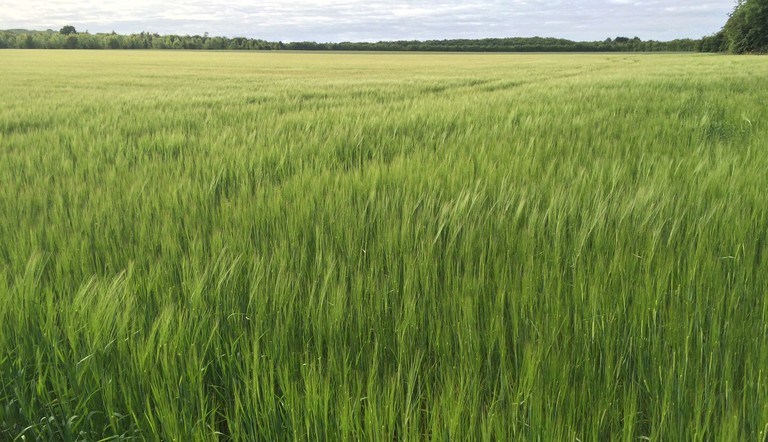
Optimising ramularia control at T2 in spring barley

The consistently wet conditions over the last two to three months have caused widespread disease pressure in cereal crops, with ramularia posing a significant threat to many spring-sown barley crops. Now, with warmer weather helping crops to progress quickly through their growth stages, this, and other key diseases, must be prevented from migrating to the upper canopy.
Robust treatments at the T2 timing (GS39-49) are therefore crucial to ensuring canopies remain as clean and green as possible, for as long as possible.
To achieve the very best level of ramularia control at T2, a broad spectrum of fungicides including the multi-site active, folpet, should be used to:
- protect the emerging flag leaf
- minimise spikelet mortality
- prolong green canopy duration
- increase the final number of grains per ear
- increase dry matter available for grain filling and increase grain storage capacity for a higher thousand grain weight (TGW)
- protect the quality of high value crops destined for the malting market.
Efficacy and resistance management
The development of resistance to single site chemistries has made it increasingly difficult to achieve effective ramularia control: the efficacy of prothioconazole and SDHI chemistries has been significantly eroded, while strobilurin-based fungicides have largely been rendered ineffective. Likewise, whilst the isopropanol-azole Revysol retains activity against ramularia, it too is at risk to resistance and will benefit from being partnered by folpet.
Effective ramularia control is therefore reliant on the addition of a multi-site fungicide such as ARIZONA (500g/l folpet) to programmes. Folpet should ideally be used at T2 when its inclusion within the tank mix at 1.0-1.5l/ha will provide robust protection against ramularia.
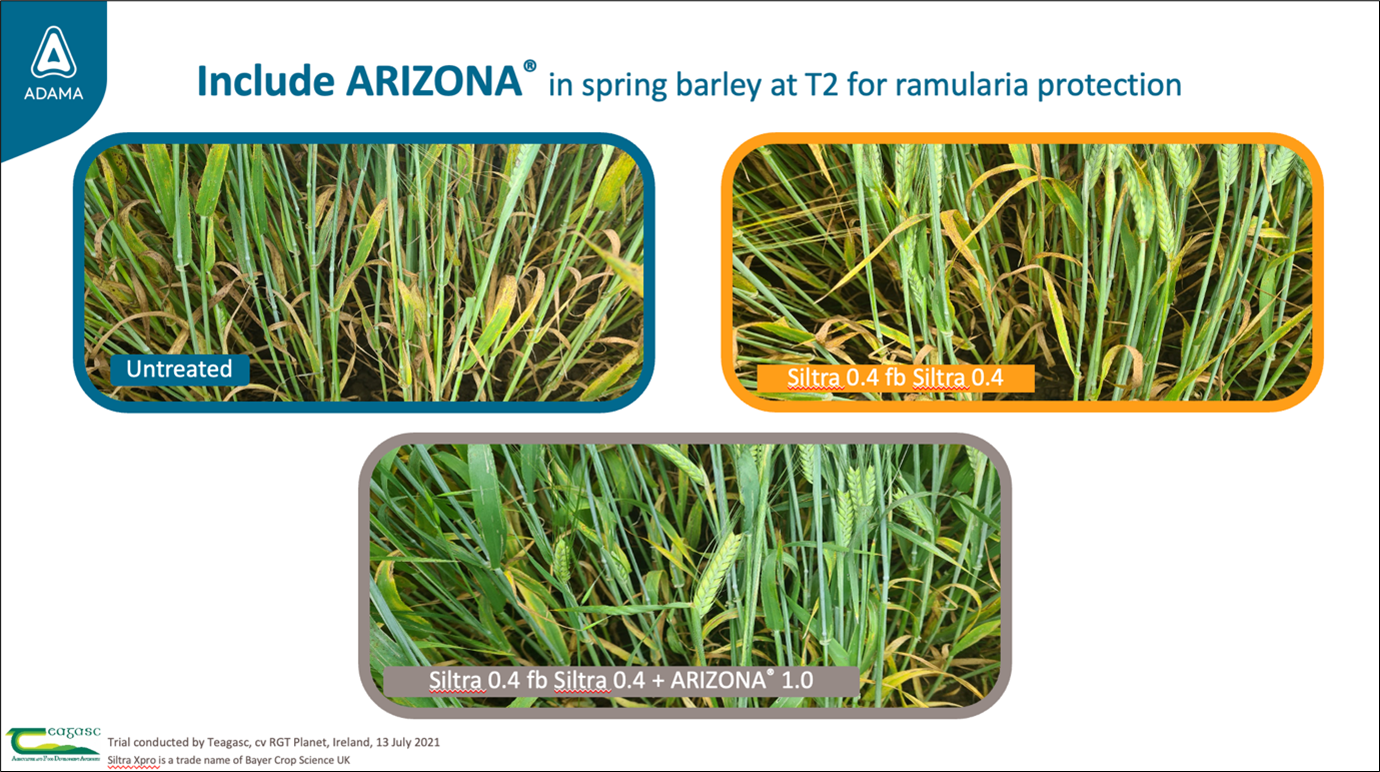
The addition of ARIZONA to T2 treatments improves ramularia protection.
The recent addition of net blotch to the ARIZONA label, plus its proven activity against rhynchosporium, adds to its scope of advantage and marks it out as a key component for the protection of the upper canopy. Its inclusion at T2 also helps to protect other active ingredients as part of a resistance management strategy.
Trials have shown that the inclusion of ARIZONA as a T2 tank mix partner improves ramularia protection…
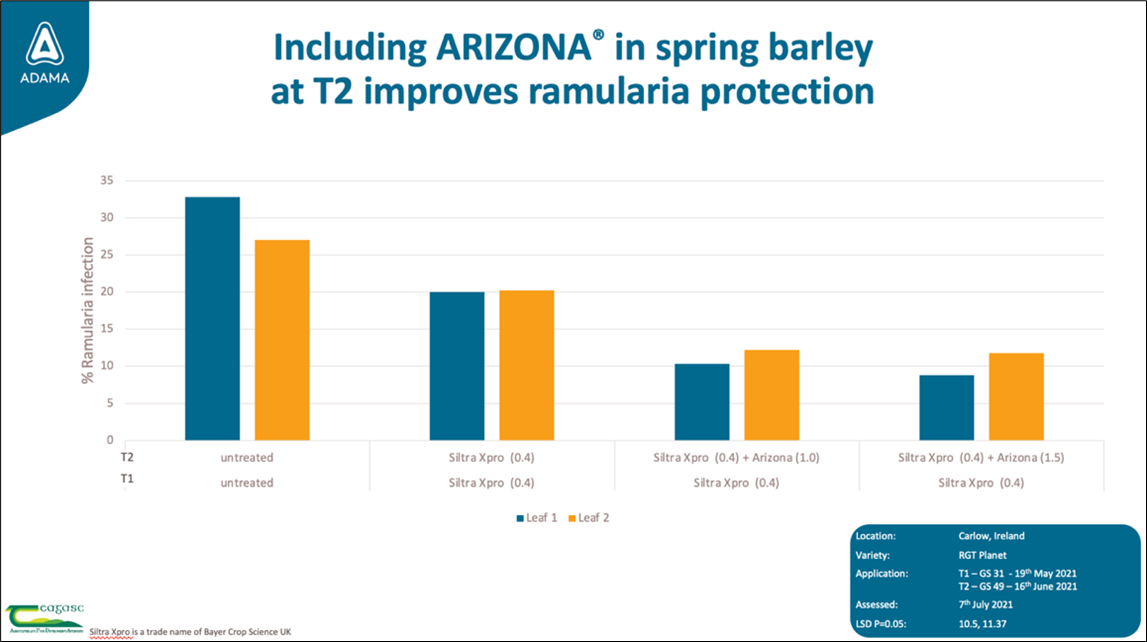
…which translates to improved green leaf retention.
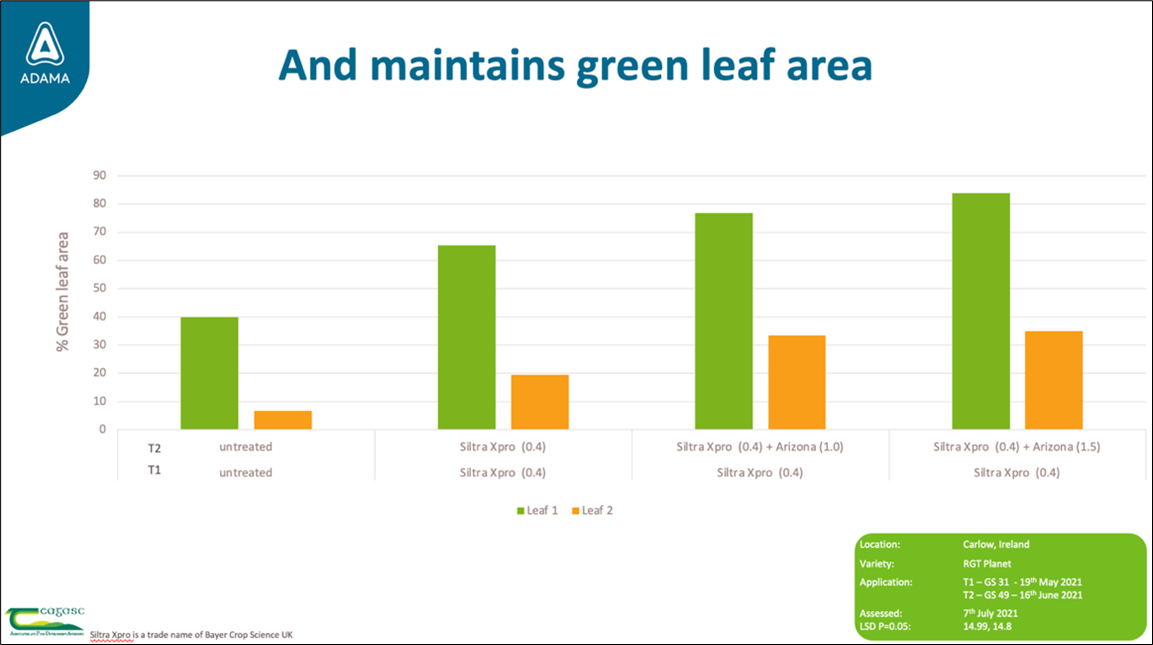
Two are better than one
As the charts below show, ARIZONA’s value is maximised when it is used twice in the season: ideally at T1 or T1.5 (typically at GS37 in conjunction with a PGR) and again at T2 (GS49) to target ramularia. ARIZONA can also be used at T3 should the need arise (up to, but not beyond, GS59).
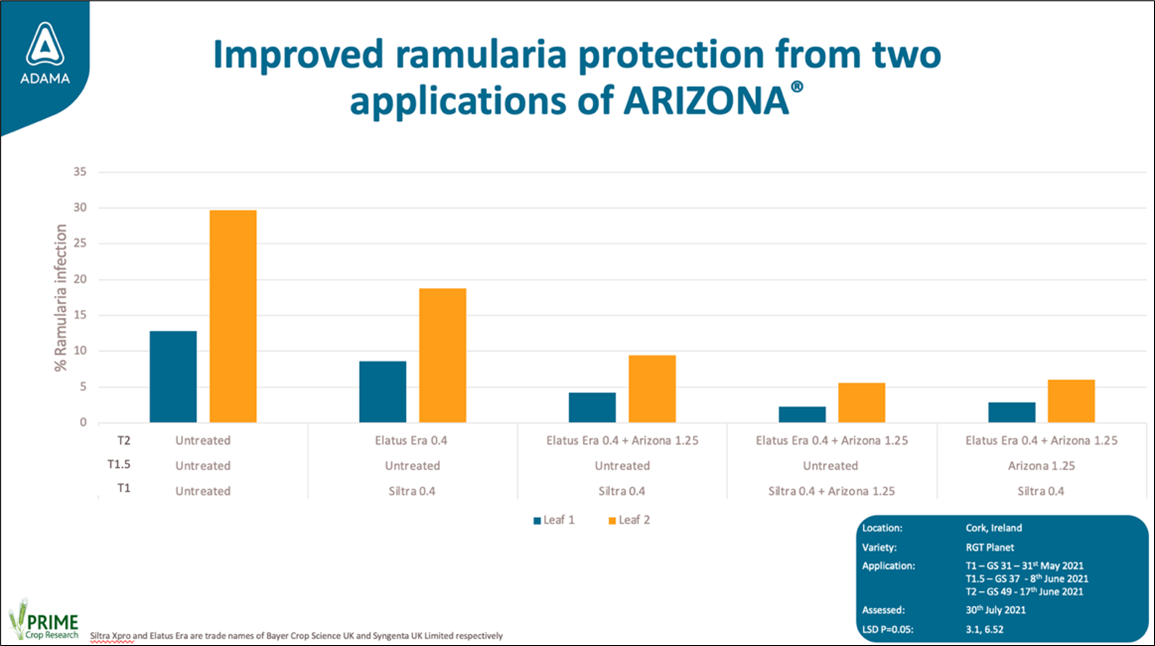
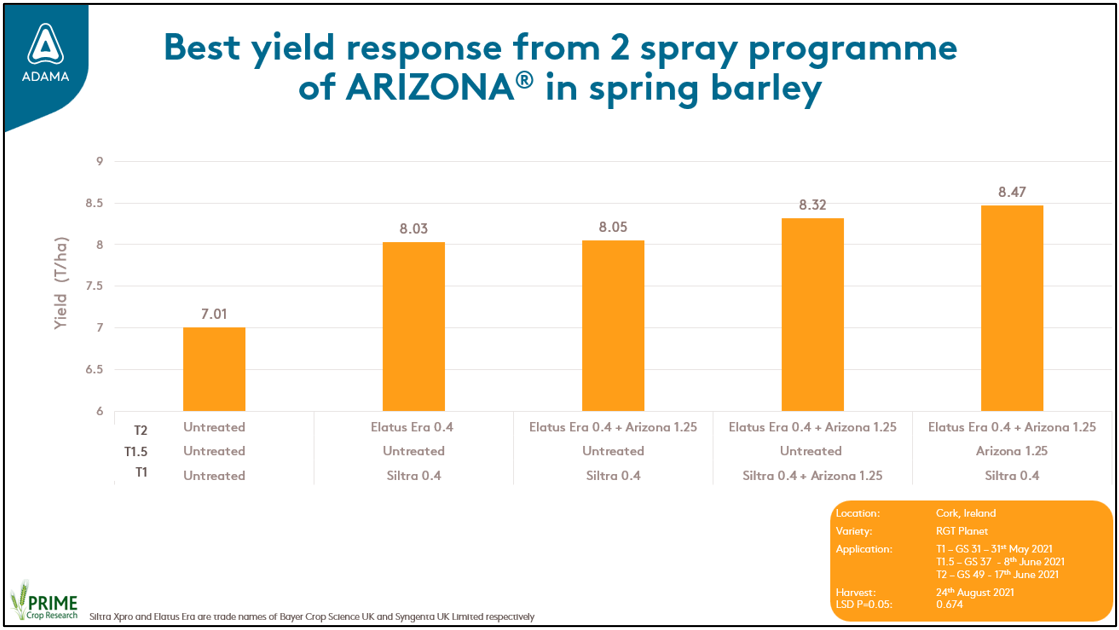
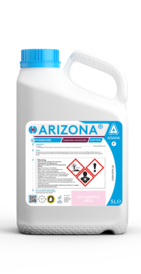
ARIZONA® is a unique multi-site protectant fungicide containing straight folpet (500 g/l) for providing an anti-resistance strategy for the control of a range of diseases in barley and wheat. It is the ideal tank mix partner as it does not interfere with the uptake of curative partner products, thereby enabling triazoles and SDHIs to work to their full efficacy.